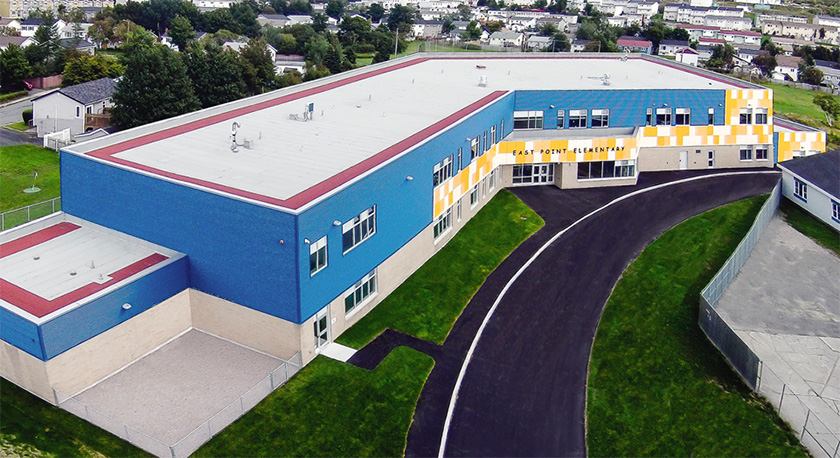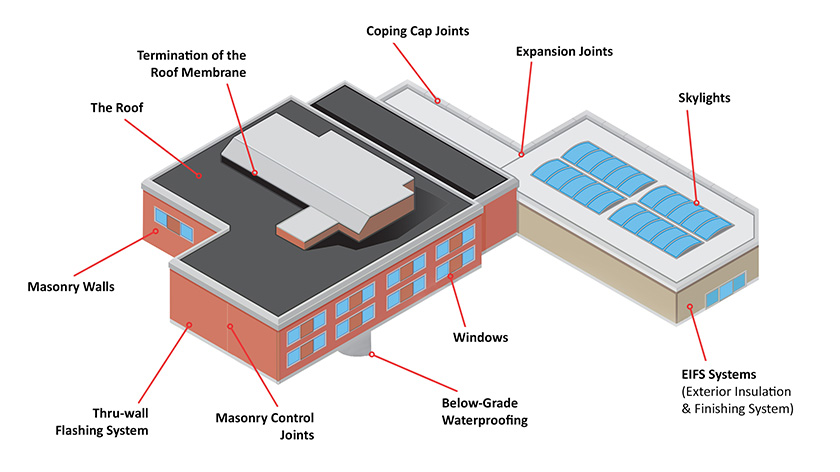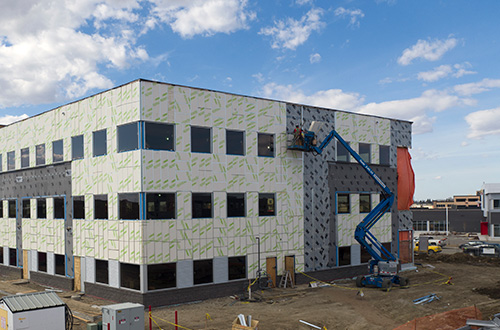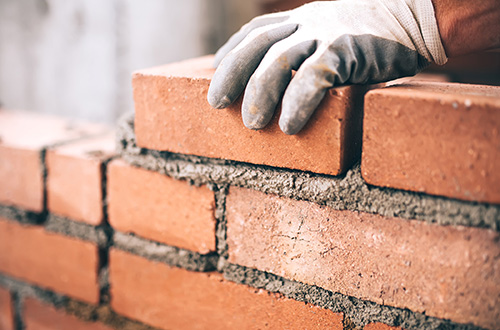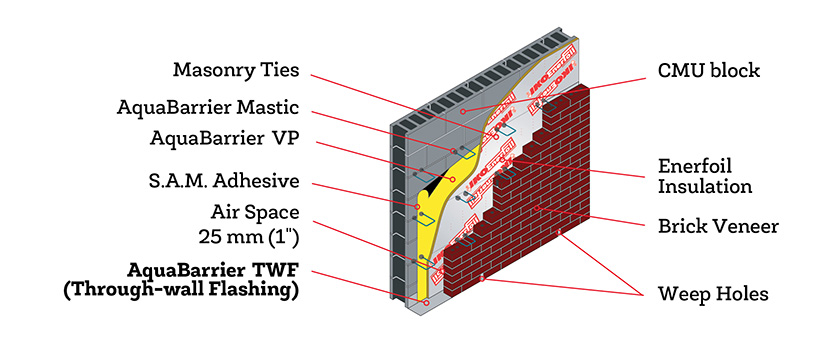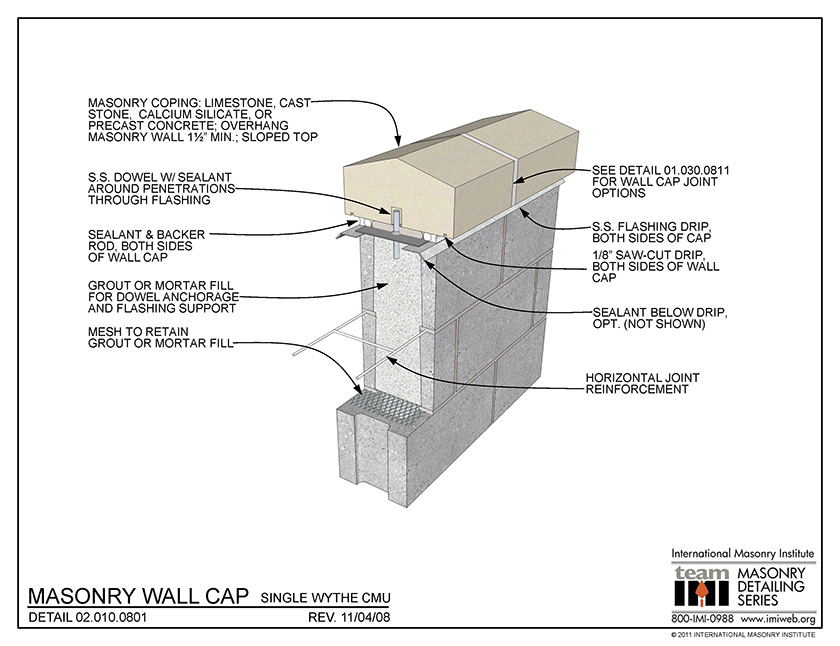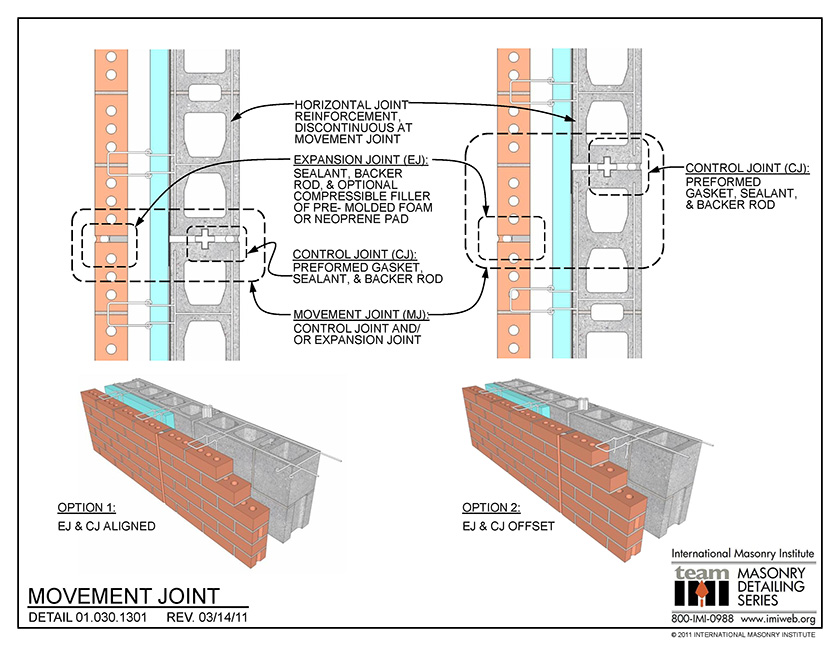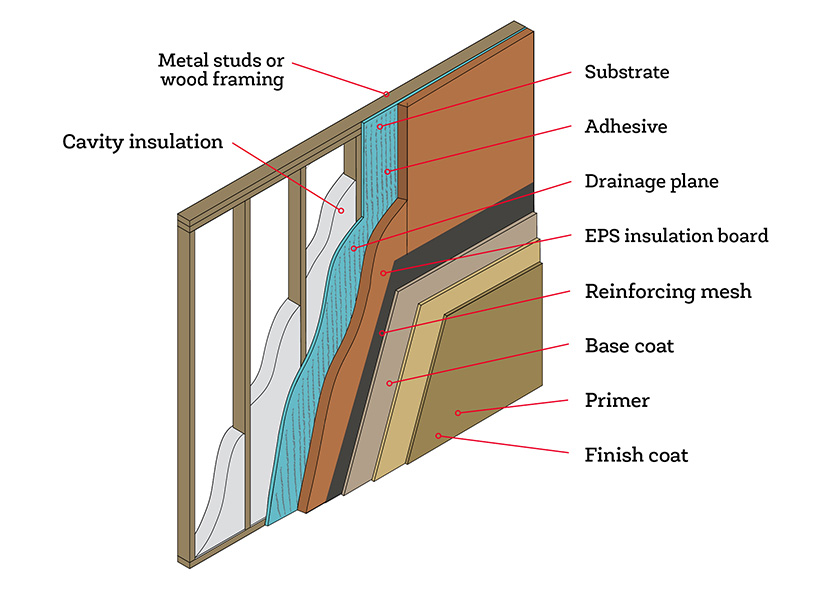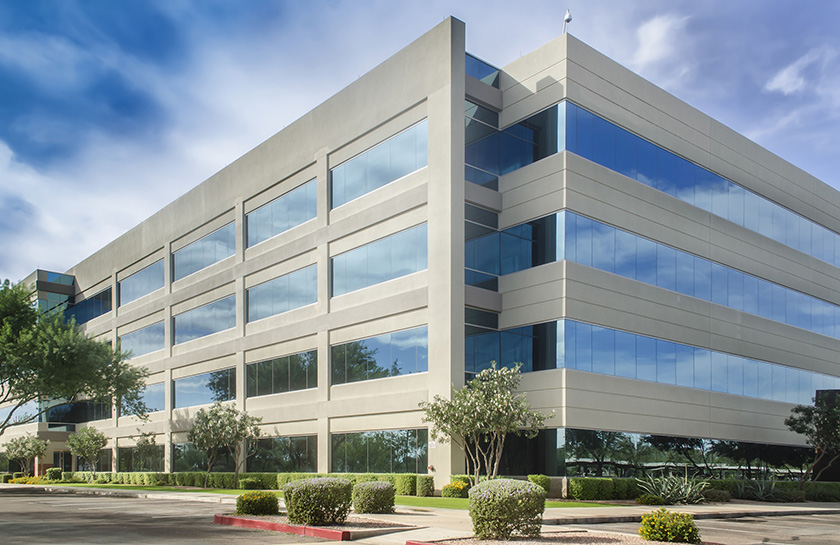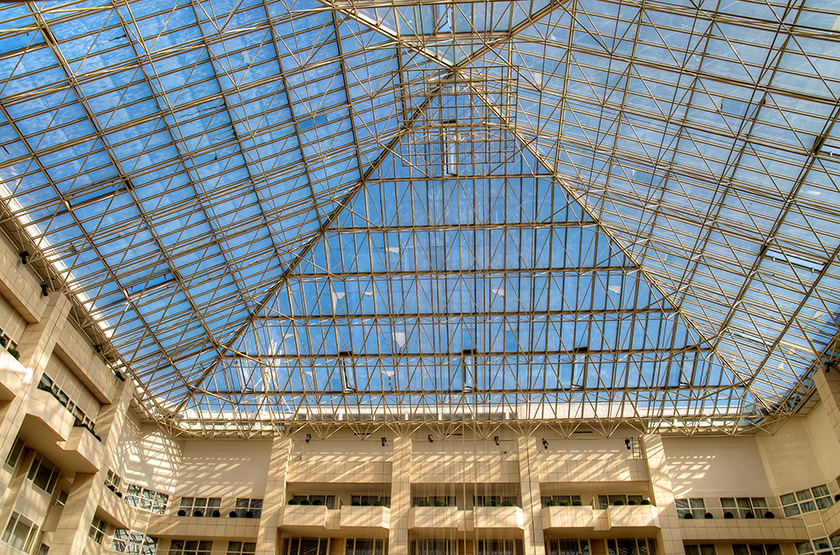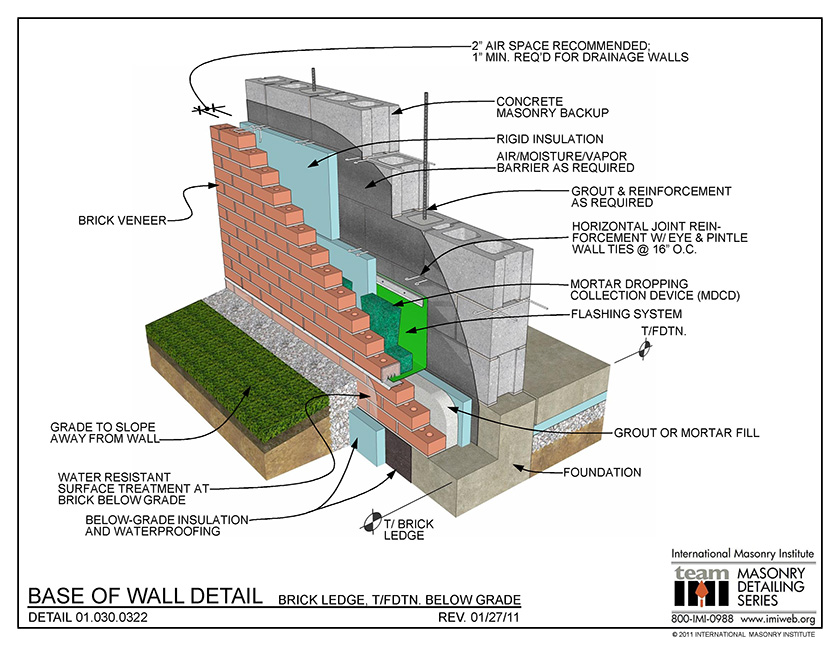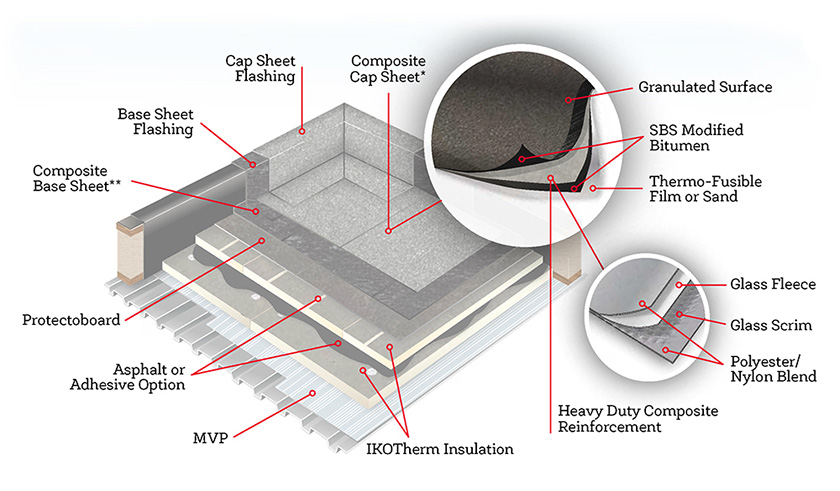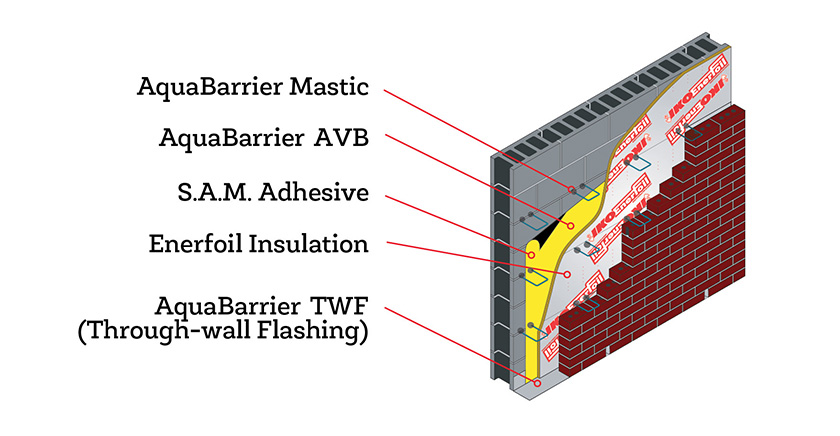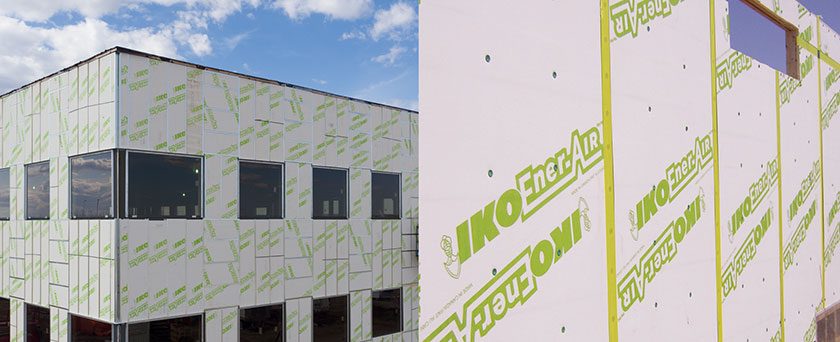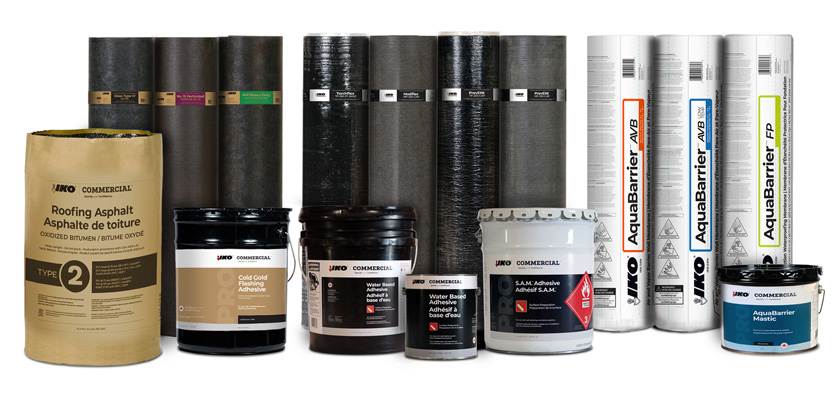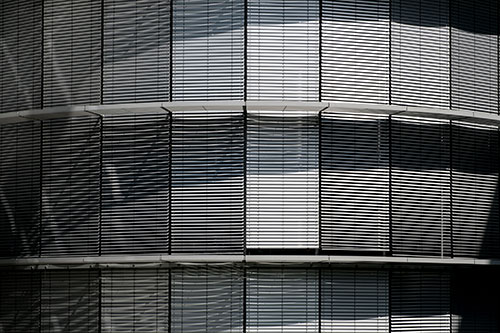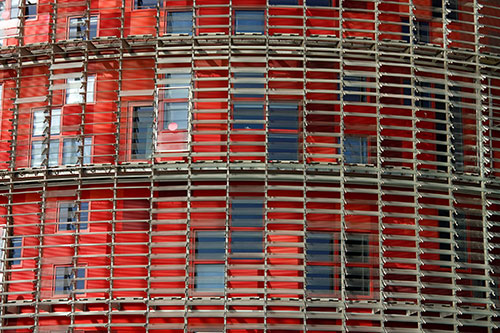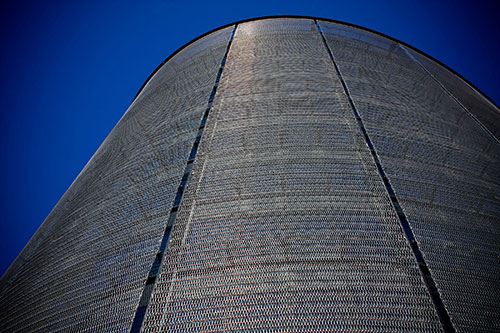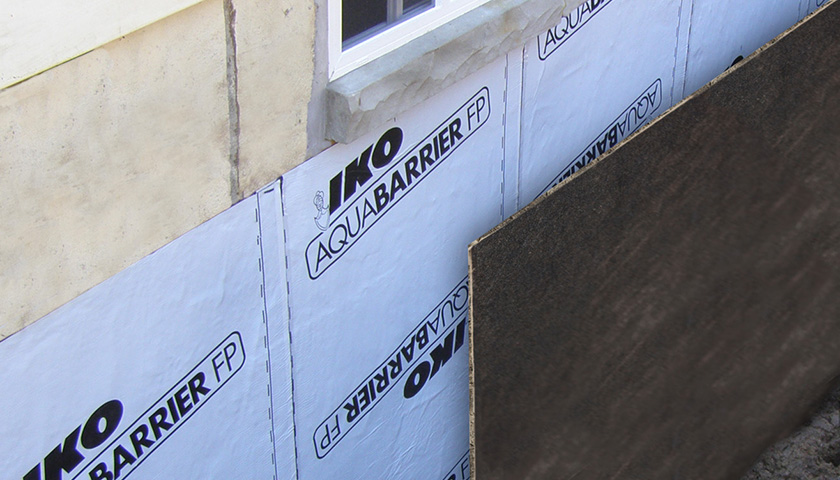Understanding the Building Envelope
This article is intended to provide an overview of the building envelope and details about its components and products.
The building envelope consists of the parts of a building that keep the weather out and conditioned environment in. This includes three main systems: the roof, the wall (including doors and windows) and below-grade waterproofing elements. While this applies to virtually any building, our focus for this article is on commercial and industrial buildings.
Fig. 1 – Simple Building Envelope
Professional assessment, diagnosis, design and management of the building envelope can save money, decrease energy usage, lengthen the life of building materials and improve the environment within.
As part of their “Whole Building Design Guide,” the U.S. National Institute of Building Sciences (NIBS) developed a comprehensive guide for exterior envelope design and construction for institutional and office buildings in late 2016 under guidance from the past Federal Envelope Advisory Committee. This report thoroughly outlines all of the components of the building envelope and offers an exhaustive list of related resource pages related to air barriers, air quality and mold prevention, and sustainability and wind safety, to name a few categories.
In examining a structure in its entirety, there are a number of common building envelope concerns, including:
- High energy costs.
- Uneven temperatures and drafts.
- Moisture, mildew, condensation and mold.
- Eventual deterioration of building materials.
As we break this review into the parts that make up the building envelope, let’s begin with the ROOF. A building’s roof is like the seal to an envelope. It’s meant to close the envelope securely, keeping the contents safe from outside elements. In the case of most commercial, industrial or educational institutions, roofs are usually flat, or low-slope. The importance of the roof to a building is paramount.
Commercial roofs, as shown in the picture above, come in a variety of system types, including asphalt-based, single ply, rubber and metal. The choice of these system types will depend upon specification, budget, climate and environmental considerations. If you need to learn more about flat roofs, check out this complete survey of low-slope roofing in the guide to Choosing a Flat Roof.
Beyond the membrane itself, proper installation of the many components that meet the commercial roof membrane at its termination point is critical. Additionally, roof penetrations for HVAC equipment must be checked during inspection. In consideration of these important details, an essential roof system accessory is sealant. Both sealants and caulking are maintenance items that should be checked for serviceability every year with periodic replacement or redressing, typically after several years of service.
Once installed, a commercial roof must be inspected annually at minimum (and immediately after a major weather event). To determine whether repair or replacement of a commercial roof system is necessary, a licensed roofing contractor should assess the existing roof system. He or she will inspect the roof for damage and discuss details with the building owner, such as the age of the roof, the building’s use, climate concerns, the building owner’s financial expectations, budget, building code, energy requirements and possible replacement needs.
When it comes time for a roof replacement, the commercial roofing contractor should discuss options with the building owner for either a complete tear-off or reroof over the existing system. If significant damage to the deck is found, there may be no choice but to replace it during tear-off and reroof. In this case, new components above the deck may include vapour barriers, rigid polyiso insulation, cover boards, primers and coatings, all applied prior to the installation of the roof membrane. These additional components are designed to provide further weather protection and waterproofing, and to contribute to energy savings for building heating and cooling.
Fig. 2 – The Components of the Building Envelope (courtesy of Moisture Management LLC)
The second component of the building envelope includes the WALLS. The walls can be compared to the sides of a box — each meets in a corner. While the roof may offer its own set of complications, the walls have even more parts and pieces to consider and keep dry. The key elements in a typical masonry wall building envelope are featured in the diagram above and described below:
Exterior wall construction
Masonry wall
Masonry walls are exterior walls, often constructed of brick, stone or concrete. Defects in the masonry walls, such as cracked mortar joints or efflorescence (a crystalline deposit of salts that appears as a white, powdery scum on the surface after construction) are evidence of moisture intrusion into the wall.
Through-Wall Flashing System
Through-wall flashing is used to divert moisture that has entered the wall to the outside before it can cause damage. Through-wall flashing is commonly fabricated using membranes such as AquaBarrier TWF™ in such a way as to provide bond strength in mortar joints.
Fig. 3 Concrete block wall with through-wall flashing.
Additional asphalt through-wall flashing products (as shown in the diagram above) are considered effective in diverting moisture outside the wall system.
Coping Cap Joints
Sealing the wall top is an important design consideration when detailing masonry buildings. If water penetrates the top of exterior walls, the entire wall system can be compromised, leading to efflorescence and deterioration. Many types of masonry walls require proper capping to help extend the life of the wall, minimize maintenance and contribute to sustainability.
Fig. 4 Masonry wall cap illustration (courtesy International Masonry Institute).
Masonry Control Joints
Masonry control joints are needed to allow building movement and require periodic re-caulking to remain watertight. In most cases, movement is inevitable, and control joints placed in concrete masonry walls are one method of crack control. They are located where cracking is likely to occur due to excessive tensile stress. Control joints are typically located at:
- Wall openings.
- Changes in wall height or thickness.
- Construction joints in foundations, roofs and floors.
- Wall intersections.
- A determined spacing for the length of the wall.
Expansion Joints
Expansion joints allow independent movement between adjoining structural members, minimizing cracking when movement is restrained. This allows for thermal expansion and contraction without introducing stress into the system. In building construction, an expansion joint is a mid-structure separation designed to relieve stress on building materials caused by building movement. Structural movement can be attributed to thermal expansion and contraction caused by temperature changes or sway caused by wind. Expansion joints are especially important when looking at buildings with a large horizontal dimension.
Fig. 5 Movement illustration showing both control joint and expansion joint (courtesy International Masonry Institute).
The International Masonry Institute offers helpful information on the differences between control joints vs. expansion joints, as noted in the diagram above.
Exterior Insulation and Finishing Systems (EIFS)
According to the definitions of the International Building Code and ASTM International,
EIFS is a non-load bearing, exterior wall cladding system that consists of an insulation board attached either adhesively or mechanically (or both) to the substrate, an integrally reinforced base coat, and a textured protective finish coat. Another EIFS system known as EIFS with Drainage is the predominate method of EIFS applied today. As the name implies, this system helps to eliminate moisture before it has an opportunity to enter the wall cavity.
Fig. 6. Illustration showing EIFS.
Fenestration Systems
Fenestration systems represent the design, construction or presence of openings in a building,
including the windows, sunshades, light screens and exterior doors. Since these openings all penetrate the exterior surface of the building envelope, they must be properly installed and maintained to avoid future leaks.
Fig. 7. A building with multiple fenestrations.
If skylights are part of the building, the tie-in with the roof membrane can be an entry point for moisture if not properly installed and maintained. Sealants must be reapplied as they weaken with age. “The Building Envelope Design Guide” from the National Institute of Building Sciences offers detailed information about fenestration systems.
Fig. 8. A building design employing hundreds of skylights.
The final part of the building envelope is the BELOW-GRADE WATERPROOFING, which is essential to a solid foundation and to the integrity of the entire building envelope environment. Correct installation of below-grade systems is critical in preventing foundation leaks. The foundation wall of a building may be a concrete retaining or basement wall, or a structural wall complete with load-bearing pilasters.
Figure 9. Below grade foundation wall.
Building Envelope Product Specifics
Now that we’ve walked through an overview of the building envelope, let’s get into details about the products that make up a typical building envelope project. Starting at the top with the roof, a number of products are part of an overall roofing system. For our example, we’ll outline what you can expect in a common commercial and industrial application.
The heavy-duty ROOFING SYSTEM shown below may be found on a school or university, a library or a hospital. Beginning with the steel deck, the system includes many important layers. Those include a vapour protector, polyiso insulation, a cover board, a composite base sheet, base sheet flashing, a composite cap sheet made of a heavy-duty reinforced glass scrim, styrene-butadiene-styrene (SBS) modified bitumen and a granulated surface, finished with a cap sheet flashing.
Moving down from the roof, there are numerous WALL SYSTEM products found in both the walls themselves and tied to fenestrations (doors and windows). Wall system product categories include thermal insulation, air/vapour/weather barrier membrane systems , through-wall flashing and accessories to aid in the proper installation of the products. For a more thorough understanding of these systems, refer to our article “An Introduction to Vapour Barriers and Vapour Retarders.”
For effective installation and waterproofing of wall systems, many contractors use specific products, such as self-adhering and torch-on wall membranes, weather-resistive barriers, permeable air/vapor barriers and nonpermeable air/vapor barrier systems.
In the case of IKO’s Ener-Air™ polyisocyanurate rigid foam wall insulation sheathing system, the exterior then becomes a high-performing air barrier, vapor barrier and wall insulation all-in-one product when joined together on a building exterior using IKO’s AquaBarrier™ Tapes. Beyond wall exterior uses, these tapes also can be used for numerous applications in specialized detail areas, such as windows, doors, skylights and metal cladding systems, and under siding at inside and outside corners.
Beyond tapes, there are other important building envelope accessories, such as adhesives, mastics and sealants, and primers and coatings. Among these superior accessory products are:
- IKO MS Detail, a solvent-free, liquid-applied membrane coating that serves as an excellent waterproofing option for hard to flash-in areas.
- AquaBarrier Mastic, a unique, modified asphalt sealant that is formulated with synthetic rubbers for longevity and glass fibers for extra strength. AquaBarrier Mastic is fully compatible with IKO waterproofing, air and vapour barrier, and roofing system products. It can be applied on damp or dry surfaces and will not slump or pull away from the substrate.
- IKO S.A.M. Adhesive, a quick-drying, solvent-based surface preparation for use with IKO self-adhering roofing membranes or IKO AquaBarrier™ self-adhering wall membranes.
- IKO S.A.M. Adhesive LVC, a low volatile organic compound (VOC) solvent-based primer for use with IKO self-adhering roofing membranes or IKO AquaBarrier self-adhering wall membranes.
- IKO Water Based Adhesive is a solvent-free primer and may be applied using a brush or roller, or by mechanically spraying.
Many popular wall systems also include those with a metal cladding exterior façade, such as architectural and aluminum wall panels, insulated metal wall panels, aluminum composite material panels (ACPs), insulated wall cladding panels, insulated translucent fiberglass panels, metal column covers and curtain wall systems.
As mentioned earlier in the overview, fenestration systems within walls represent the design, construction or presence of openings in a building, including the windows, sunshades, rain screens, light screens and exterior doors.
Sun shades
Rain screens
Light screens
Many buildings constructed today extend one or more floors below grade level. These below-grade areas provide functional spaces for such uses as storage, office space, mechanical/electrical rooms, parking, tunnels or crawlspaces. These below-grade areas in buildings provide important critical functions for the building.
According to the recent industry article, “CEU: Below-Grade Waterproofing Systems and Design,’ failure to pay adequate attention to below-ground levels when designing a building can lead to significant problems. If the design, installation and inspections of foundations/basements are ignored, or if below-grade waterproofing is not installed or is inappropriately installed, this can lead to a serious negative impact on the building life span and performance.
Following the wall system products, there are a number of important BELOW-GRADE WATERPROOFING products, including membranes, primers and mastics. Two outstanding products in the IKO line of below-grade waterproofing foundation protection include:
AquaBarrierTM FP Foundation Protection, is a self-adhering, cold-applied SBS-modified composite sheet membrane designed to provide primary waterproofing and foundation protection from the damaging effects of water. AquaBarrier FP can be applied to all common building substrates, including concrete, gypsum, CMU and OSB.
AquaBarrier FP
IKO’s Protectoboard™ is a versatile asphaltic cover board composed of a mineral-fortified asphalt core between two layers of high-strength reinforcing fiberglass mat. Protectoboard is not only designed as an overlay board in a conventional roof system but also can be applied as a protection board in a vertical wall application or as a protective layer over the waterproofing membrane in a below-grade installation.
Important Code and Technical Considerations
The New Energy Code
The New Energy Code for Commercial Buildings, Standard 90.1-2016, was published in late 2016. Developed jointly by the International Code Council or ICC (residential and commercial buildings) and the American Society of Heating, Refrigerating and Air-Conditioning Engineers or ASHRAE (commercial buildings). While the public can participate in either of these processes, by law the U.S. Department of Energy (DOE) is required to participate in both. ANSI/ASHRAE/IES Standard 90.1 is a model standard also known as the Energy Standard for Buildings Except Low-Rise Residential Buildings. An updated edition is published every three years and provides the basis for energy codes adopted by the U.S. The 2016 edition contains several important changes to reduce energy consumption – changes that set the stage for future building energy efficiency requirements in commercial buildings.
“With the new energy code comes new methodologies in the process of constructing a commercial building,” says Russell Mink, vice president of Moisture Management, LLC, an Indianapolis-based roofing, waterproofing and building envelope consulting group. We recently spoke to Mink for some third-party expertise. He also shared his thoughts about the challenges of the new code, saying “The construction industry hasn’t quite caught up to it. Inspections are far more important now that the insulation is on the outside wall. It changes through-wall flashing details, so that now it goes from the brick to the backup wall to the air barrier to the drywall.”
As the staff at Moisture Management moves to meet the demands of the industry, it plans to complete certification as a Building Envelope Commissioning Agent. “Building envelopes are complex, with window walls, sun screens, and other features tied to wall systems. Building envelope specialists have so much to learn,” comments Mink.
What is Building Enclosure (Envelope) Commissioning and Why is it Important?
The American National Standards Institute (ANSI) offers the “Standard Guide for Building Enclosure Commissioning (ASTM E2947-16a).” The purpose of the guide is to provide procedures, methods and documentation techniques that may be used in the application of the building enclosure commissioning (BECx) process. The guide outlines the process for each building delivery phase, from predesign through owner occupancy and operation. The primary focus of this process includes new construction of building enclosures, existing building enclosures undergoing substantial renovation or alteration and continuous commissioning of enclosure systems.
Additionally, the American Society of Heating, Refrigerating and Air-Conditioning Engineers (ASHRAE) offers a course that introduces the BECx process by outlining key quality-based tasks that achieve a successful building enclosure. The seminar focuses on both design and construction phase BECx activities.
For additional information, please visit IKO’s building envelope products section.


